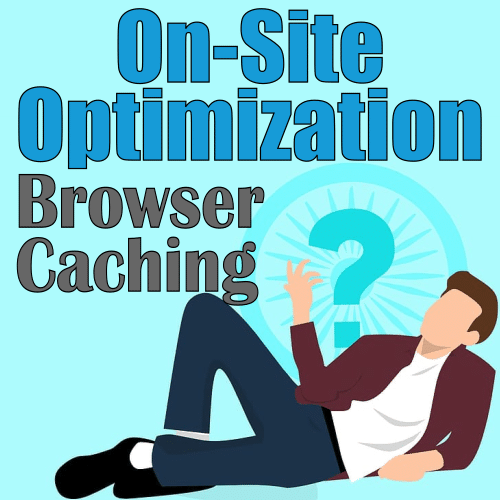 When designing a search engine optimization (SEO) friendly website close attention must be paid to various browser caching characteristics. Retrieving resources over a network can be computer power intensive where uploads, downloads and page renderings may require multiple two way communications between client and server host, which can slow down data processing and may obstruct page content displays. Because data transmission and costs are sensitive when it comes to website design and search engine optimization (SEO) all host server responses should allocate caching guidelines to assist the client, server and website in determining if and when they can reuse previously extracted content calls. The correct recycling and memorization of previously utilized content is critical to fast page speeds and premiere user experiences which is why browser caching is such a vital concept to elevated website design and SEO.
When designing a search engine optimization (SEO) friendly website close attention must be paid to various browser caching characteristics. Retrieving resources over a network can be computer power intensive where uploads, downloads and page renderings may require multiple two way communications between client and server host, which can slow down data processing and may obstruct page content displays. Because data transmission and costs are sensitive when it comes to website design and search engine optimization (SEO) all host server responses should allocate caching guidelines to assist the client, server and website in determining if and when they can reuse previously extracted content calls. The correct recycling and memorization of previously utilized content is critical to fast page speeds and premiere user experiences which is why browser caching is such a vital concept to elevated website design and SEO.
A crucial part of search engine optimization (SEO) and website design is quick loading times which heavily relies on proper browser caching. Website design formats should define direct caching policies that address the following questions: 1. If the resource can be cached? 2. What will do the browser caching? 3. How long should the browser caching occur? 4. How to account for browser caching policy expiration? To enable browser caching the editing of HTTP headers to manage the various setting questions mentioned above is required for certain file types like images, videos, CSS and Javascript, text, pdf’s, X shockwave flash and more. Now that we understand what browser caching is lets look at some of the most common recommendations when it comes to well thought out website design and search engine functionality.
Recommendation #1: Static Resource Aggression
For static content within a website’s design the focus should be on aggressive and all encompassing browser caching. For example by caching lets say a static logo image a user’s browser will only download the image once over a set amount of time. Every website visit that the user makes within the predetermined time frame would not require another download of the logo image thus enhancing page speed and visitor participation. Any piece of content that does not change should be cached at a high frequency to assure proper on-site optimization, website design and SEO.
Recommendation #2: Expiry Settings At One Month Or Greater
For browser caching file type, data and content expiration settings a general rule is to mark the variable at one month or longer. This allows users a reasonable amount of time to enjoy the website and extract it’s resources at reliable page speeds. If you have a website that sees extended use by single individuals over time then you will want to adjust your browser caching expiration parameters accordingly.
Recommendation #3: Review Your Browser Caching Settings Yearly
With the world wide web becoming an ever increasing high paced environment you will want to review your browser caching setting and implementations every year to make sure you are following best practices. As an example Google recently shut down browser caching version 4 of the PageSpeed Insights API, which was deprecated and closed down in May 2019. Version 5 is the current framework and facilitates both real-world data from the Chrome User Experience Report and lab data from Lighthouse. Yearly checkups ensure that server communication relays the correct HTTP header structures to instruct the browser on when and for how long the browser can cache content.
Coming up with a successful browser caching strategy is about defining optimal cache-control policies, invalidating and updating cached responses correctly and completing industry recommended caching checklists so that your website page speed and visitor interaction is up to par. The fact is browsers like Google Chrome, Firefox, Safari, Opera, and Internet Explorer cache a lot of information such as stylesheets, images, JavaScript files and more so when visitors come back to websites, the browser doesn’t have to reload entire pages. Utilizing a tool like YSlow is a great way to check if expiration dates are set for your browser caching. By implementing consistent URLs, ensuring the server provides valid tokenization, identifying which resources can be cached by intermediaries, determining the optimal cache lifetime for each resource, planning the best cache hierarchy for your site and minimizing churn ratios you will able to cultivate correct browser calculations. In the end if you want your browser caching to be the very best it can be you will want to work with a website design and search engine optimization (SEO) company that knows all the in’s and out’s of the subject matter.
Let’s Work Together
TELL US MORE ABOUT YOUR PROJECT
Let us help you get your website found. Or, if you simply have a few questions, then fill out the form below and we will get back to you.
